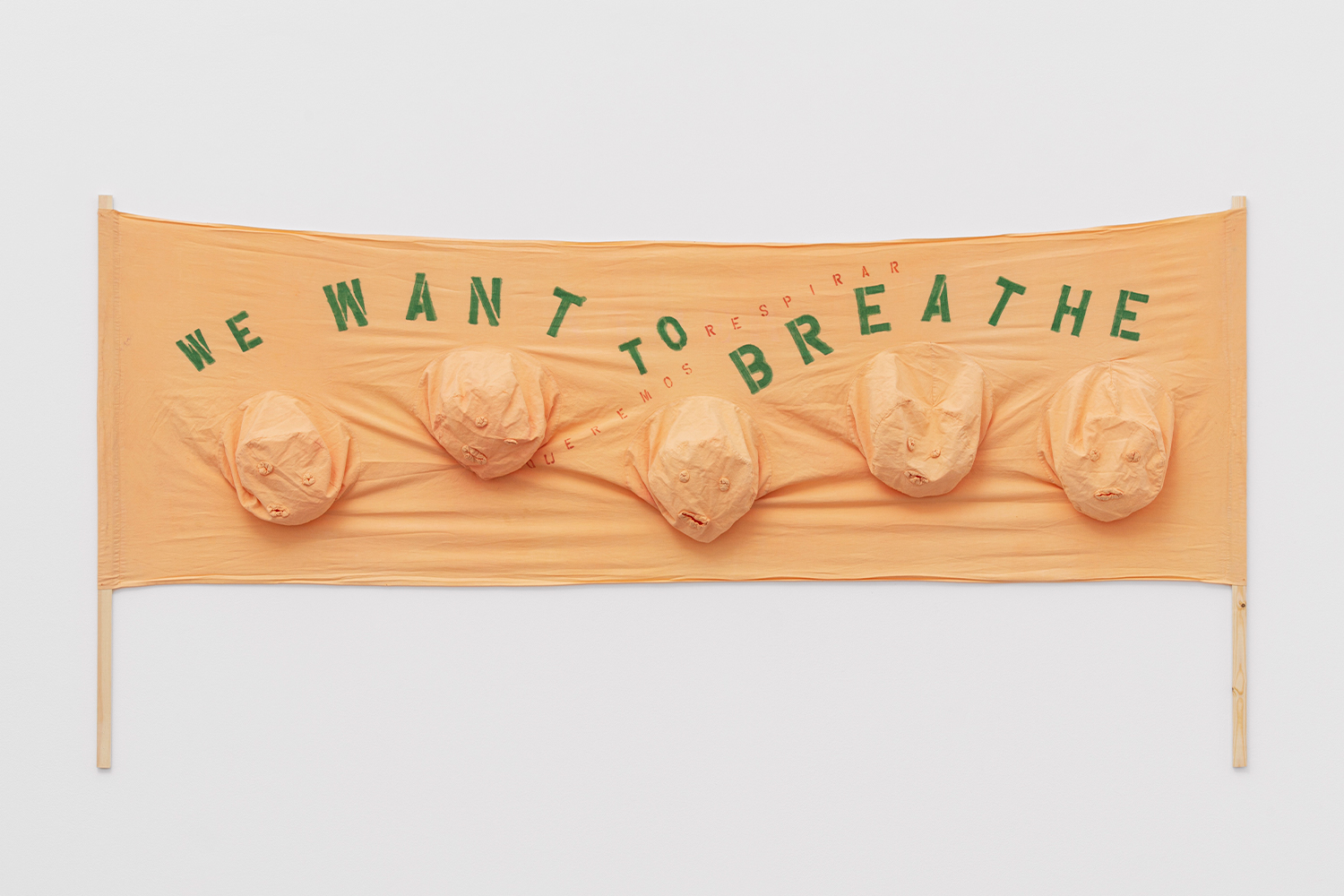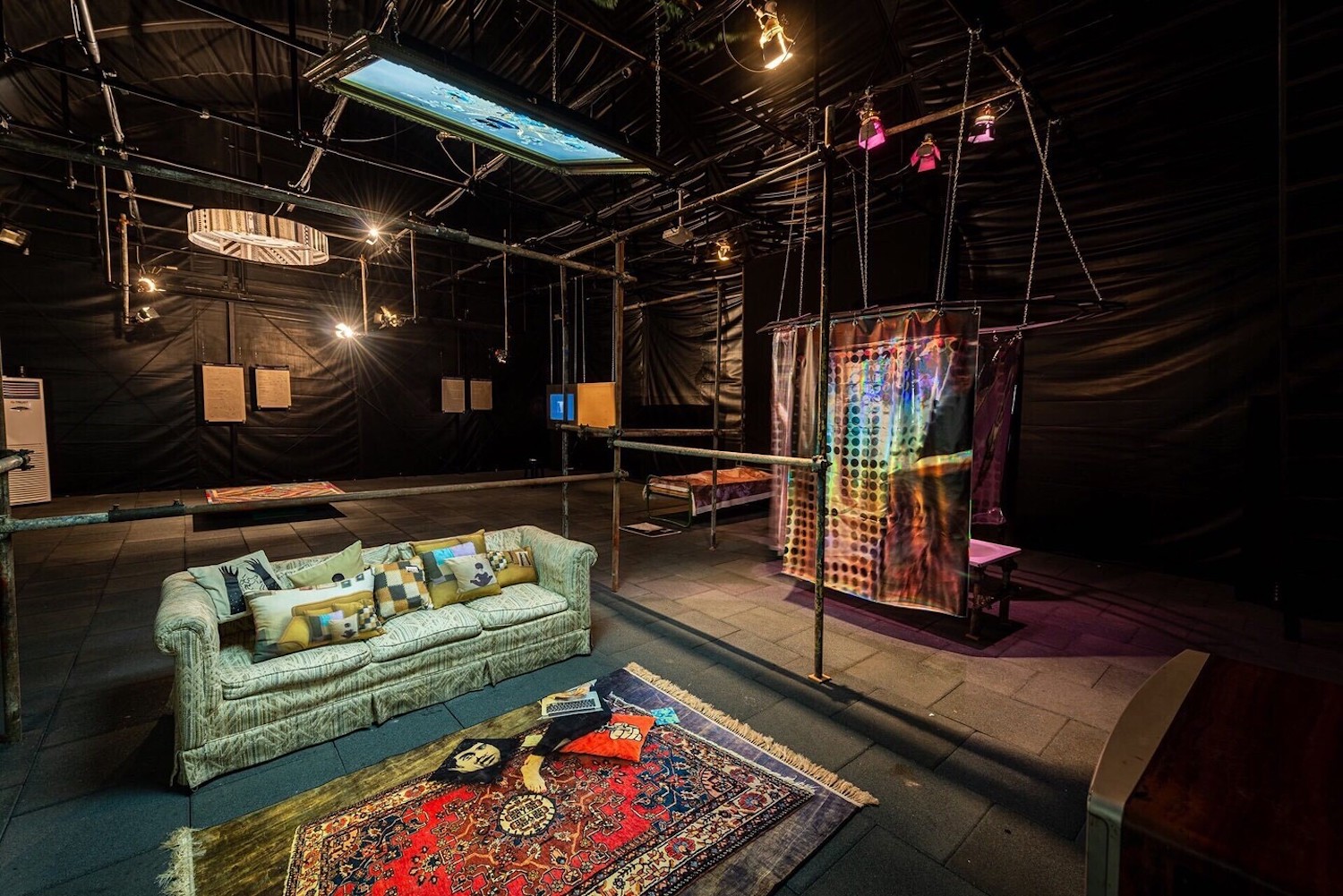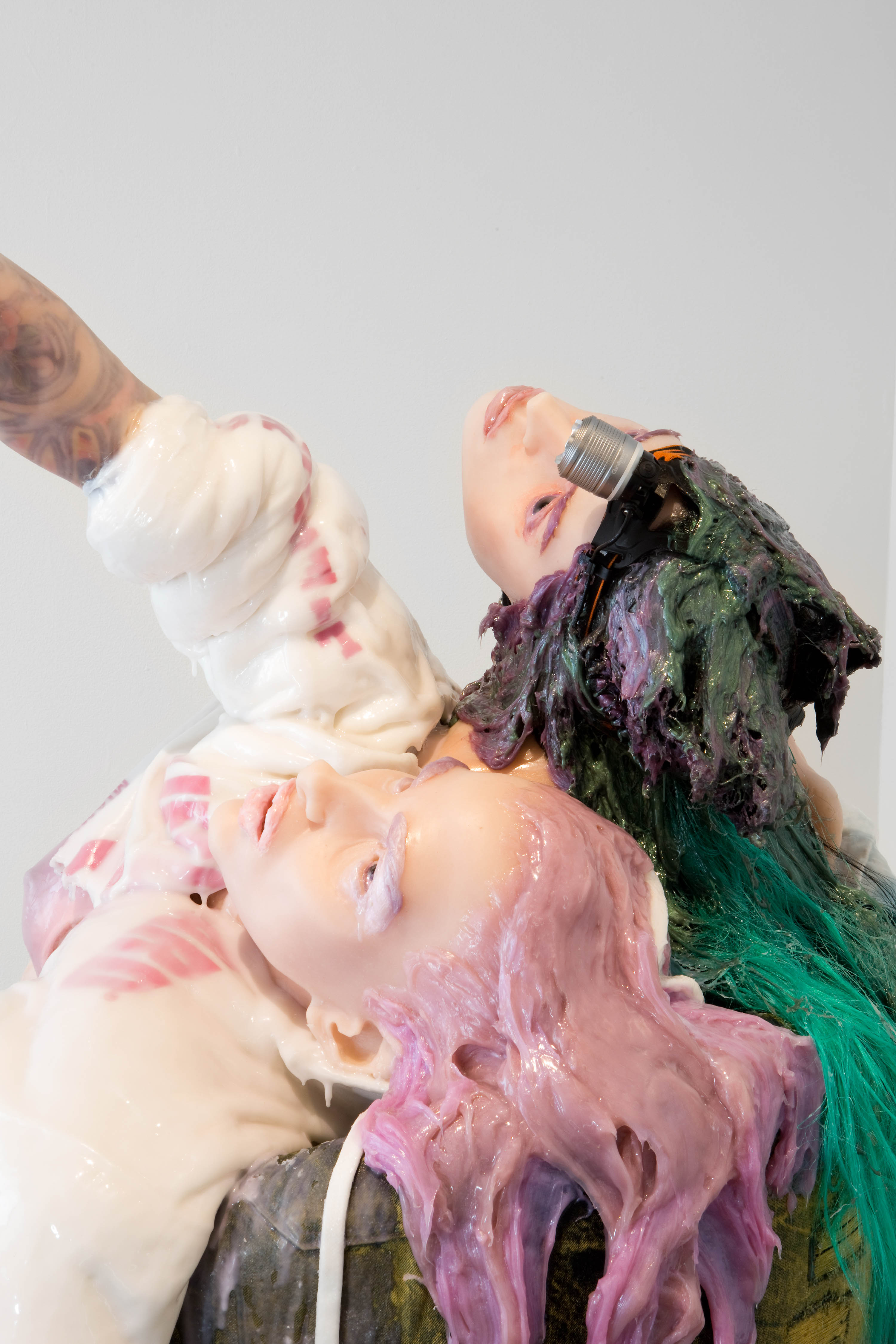To top 2021 off with a high note, we have invited our contributing editors to choose the contents that best represent the history of the magazine this past year. Enjoy!

Pascale Krief: The three features I selected are mainly works of art criticism that reflect, in my Anschauung, the very specificity of Flash Art, partly consisting of a fruitful tension between highly exigent classical art criticism and personal essays on art that are literary in nature.
“Anne Imhof in Three Acts, an Improvisation: Hunter, Writer, Lover” by Benjamin Piekut, published in no. 334 Spring 2021, reflects this tension with an analysis that traces a very personal point of view on Anne Imhof and Eliza Douglas, who I think are two of the most important artists working in recent years.
“Intimate Dislocations: On Lydia Ourahmane’s Barzakh” by Carlos Kong, published in no. 335 Summer 2021, also perfectly reflects this duality with a very deep and precise analysis that reveals a sensitive dimension.
“Materialist Invisibility: Art As Organic Development in Pamela Rosenkranz’s Work” by Nicolas Bourriaud, published in #336 Fall 2021, has these same qualities and balance. Bourriaud was one of the first to introduce this way of writing in France.

Pierre Bal-Blanc: These articles are what you expect to find in the best contemporary art magazine, that is to say: interviews with living artists, art inserts, and cross-cultural analysis, all of which Flash Art has delivered for more than fifty years.
“Nour Mobarak: Movements of Spheres for a Hybrid Economy of Desire” by Marie de Brugerolle, published in #336 Fall 2021. The work Reproductive Logistics pretends to plot the external circumstances that have dictated Mobarak’sability to reproduce — both as an artist and biologically. There’s a metamorphosis, a decomposition, and recomposition.“The work is eating itself.”
Omer Fast, in his visual essay “KARLA” published in 333 Winter 2020/21, actualizes within our technological environment the concept of “image rebuttal” which, according to Sade, is at the heart of a functioning moral conscience.
“Thirty Years of Slam Jam: Luca Benini on the Origins and Future of One of the Most Influential Contemporary Street Culture Brands” by Gea Politi. As Luca Benini from the fashion label Slam Jam confesses to Gea Politi, “The important moments and places where I could show off were in the town square, at church, or at the club. Today the mechanism seems to be the same.” Swag is not over, and this article demonstrates brilliantly the need to testify to this history of attitude.
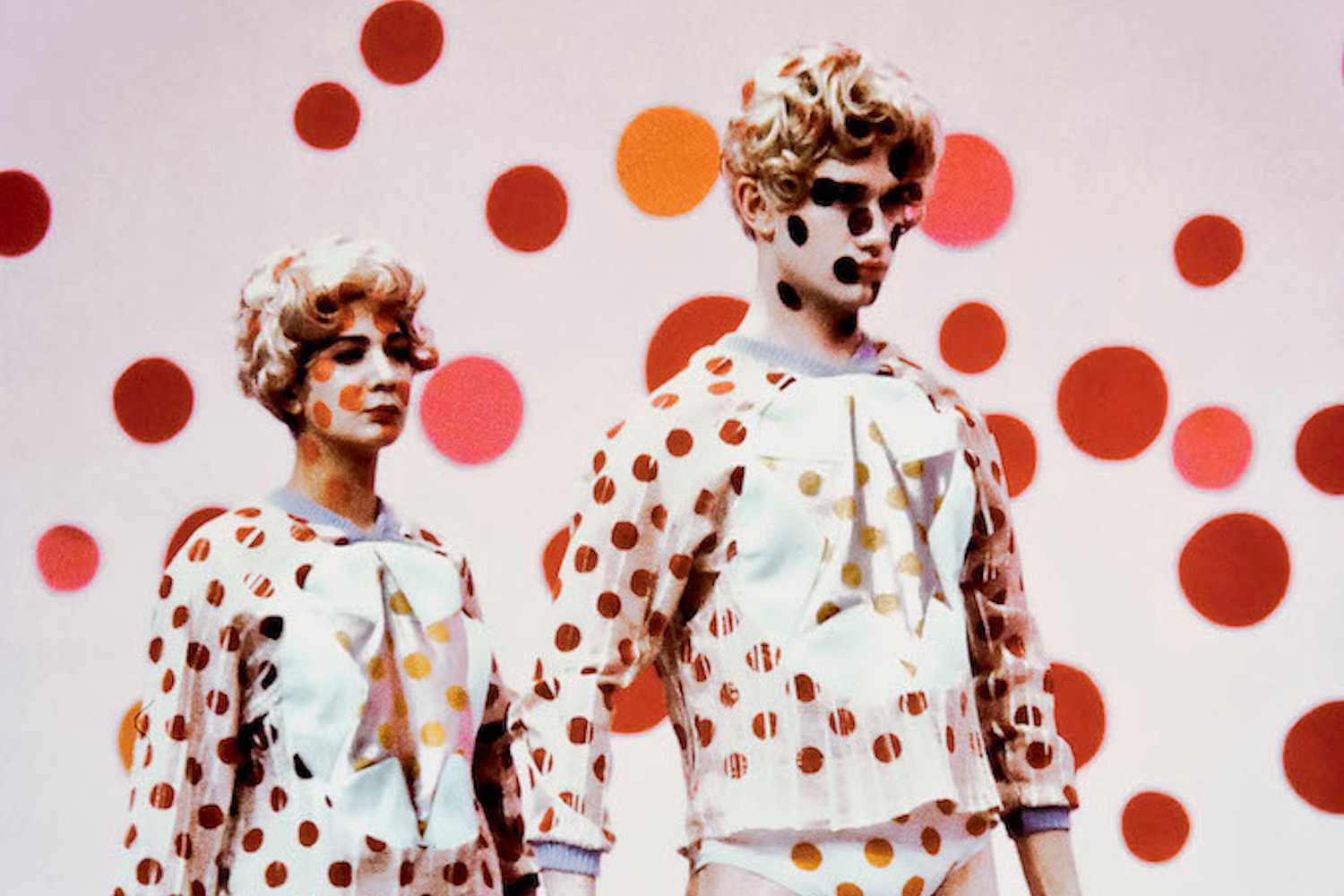
Benjamin Piekut: The contemporary art writing I appreciate most declines to presume a shared background or critical vocabulary with its reader. Instead, it conveys the depth and complexity of its subjects without getting lost in the details — a delicate balance, and rare.
“Prediction in the Era of Digital Stupidity: Hito Steyerl” by Noam Segal, published in 334 Spring 2021. Segal does everything one would want a critic to do: she tells us about the work, burrows into its intelligence, and returns with new ideas of her own.
“Terra Incognita: A Conversation with Caterina Barbieri” by Ruben Spini, published in 335 Summer 2021. Many interviews between friends or collaborators relax and unwind into predictable territory. Not this one.
“Something like Saturn: Michael Clark” by Alex Bennett, online column “Dance Office,” published on January 12, 2021. In Bennett’s thoughtful account of the choreographer’s early career, I find an artist too important to have missed.
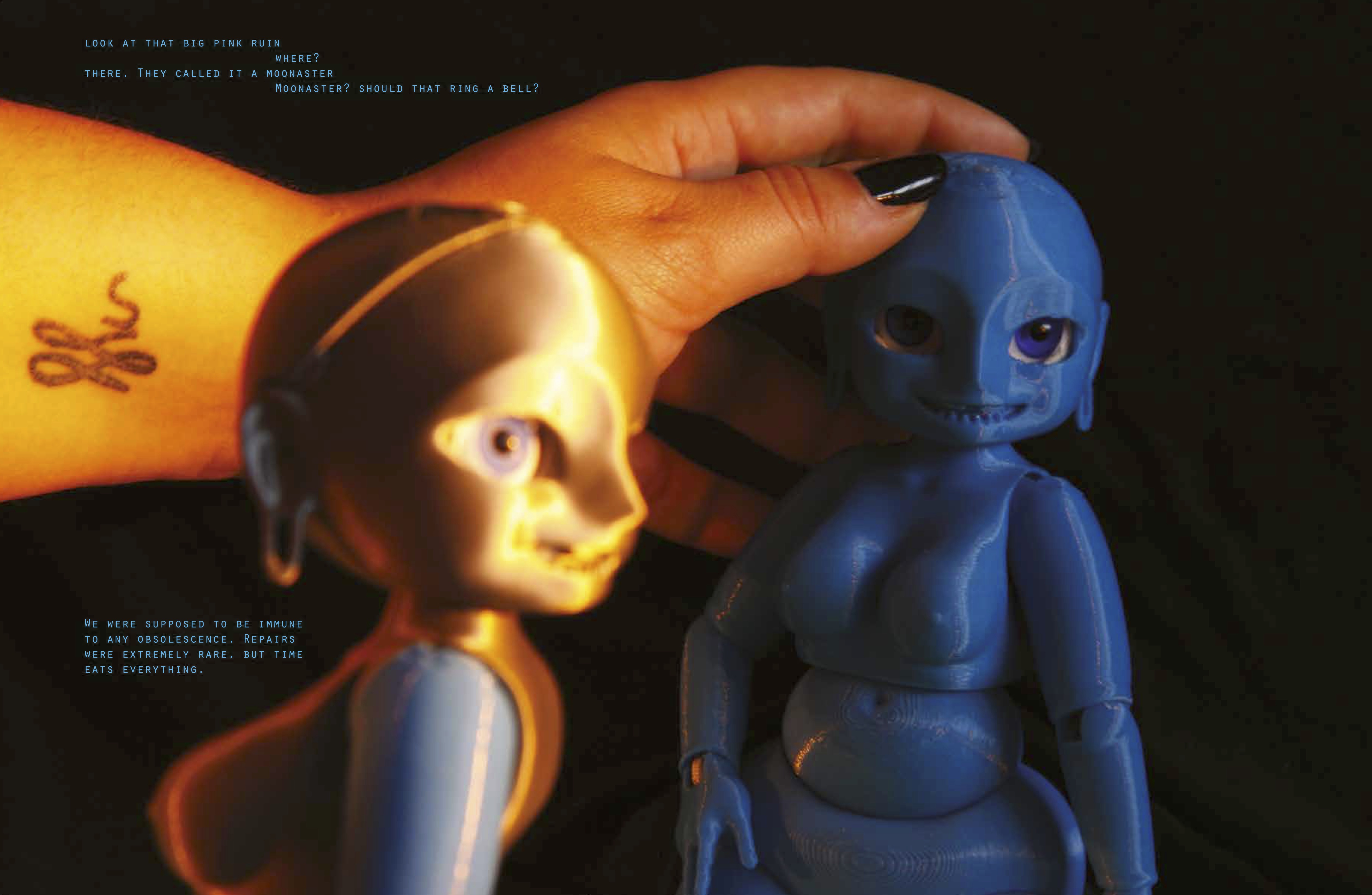
The best visual project of 2021 selected by Flash Art’s editorial team: Giulia Essyad’s THE BLUEBOT STUDIES
This past year we worked alongside artists to produce visual projects conceived specifically to accompany the topics we covered. Giulia Essyad’s visual essay THE BLUEBOT STUDIES was an excellent example of an artist successfully transposing her moving-image-based practice to print. The project is an archive of the BLUEBOT project, which includes video works, exhibitions, writing, sculpture, music, and more. The narrative core of the project is a sci-fi saga about a utopian civilization in which humanity’s method of reproduction is assisted parthenogenesis.


